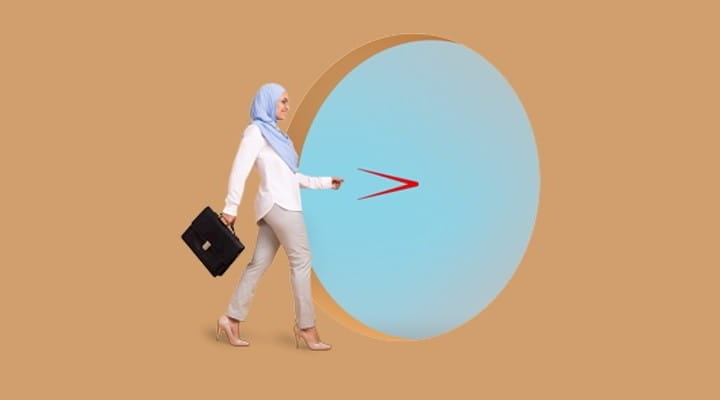Organisations and managers wondering how best to make the most of their training programmes should start by broadening their horizons, according to Corinna Black, Head of Learning, Development and Talent at the National Audit Office (NAO).
To do something innovative with training, you should extend your reach to get a mix of different thinking preferences, skillsets and personalities, and bring them together with the freedom to innovate,” she advises.
Black has overall responsibility for learning and development (L&D) at the NAO, the organisation tasked with providing assurance over UK public spending and which audits the public accounts of government departments and agencies.
Black is passionate about the value of diversity in enabling innovation. “In any training environment, if you can blend differences then you are going to get a much better offering than if you task a couple of individuals with the same project,” she says. “That's what we did really well on the ATP, we had a lot of key individuals who were very different, and all had an important role to play.”
The learning offer that this diverse team created was a two-and-a-half-day immersive experience. It brought NAO auditors together in a workshop that imitated the planning stage of an audit. In a space that included exhibition areas and team zones, groups used an online learning experience platform to guide them through the training at their own pace and provided flexibility to support different approaches.
Alongside support from technical experts, information was shared through videos, posters, activities and written guidance. After focusing on tasks related to the audit planning case study, the groups were brought together for plenary sessions. Here a range of novel approaches, including writing newspaper articles and using Lego as a visualisation tool, were used to reflect on key learnings.
If positive feedback from attendees and evaluations demonstrating that the learning is being applied wasn’t success enough, the programme was named Public Sector Initiative of the Year at the British Training Awards in June.

The National Audit Office team winning Public Sector Initiative of the Year at the British Training Awards 2023. (From left: Steve Mirfin, Senior Learning and Development Specialist; Corinna Black, Head of Learning Development and Talent; Debbie Edwards, Senior Auditor; and Anna Wydra, Senior Learning Development Specialist)
Tackling training for ISA 315
The catalyst for the creation of the ATP was the 2019 revision of ISA 315, which introduced significant changes to audit risk assessments. With more than 450 staff members to train on changes to methodologies and a new piece of software, the NAO’s learning and development team also saw an opportunity to promote a collaborative approach to audits.
Debbie Edwards, ATP Workstream Lead for L&D during the project, explains: “We updated our audit methodology and we needed a new planning tool to support the shift in how risk was identified and assessed.
“The technology enabled us to comply with the new standard, so our staff had to understand the changes to how they should be planning audits and use technology to support them. With those two things changing we couldn’t work in the same way, which is where the behavioural aspect came in.”
Designing training that covered new skills, technology, behaviour and methodologies, was not something that the team had attempted for some time, meaning that they had scope to do things differently. Time and resource pressures also meant that a traditional classroom-based training wasn’t an option.
“We needed to upskill quickly and, as we had come straight out of COVID, we were conscious that lots of things were shifting in the wider world of work and we needed to be able to respond to those changes in a way that would support the learning,” explains Black.
“We needed people to be able to absorb a lot of knowledge quickly, be able to retain, recall and work with it. And we also wanted the event to be a really positive experience where people were energised and motivated.”
It was important to NAO to create an environment that would allow people to relax, be open with one another and to engage over a long and intense period of time. To succeed in delivering this complex list of aims planning was crucial.
Preparation, preparation, preparation
A lot of work goes into making good training look effortless. Edwards confirms: “When a course runs smoothly, that's a function of the depth of experience and the quality of the design. When it feels like people have just come together to talk about things that's because it's been really polished.”
Behind the success of NAO’s ATP was many months of work starting with a comprehensive exercise to define exactly what success would look like. The first challenge was pinning down the scope for the event, with so much needing to be achieved the team had to decide priorities.
“We started with some high-level objectives, which gave us a framework, but there was so much that could sit beneath that we had to break it down further,” explains Anna Wydra, a Senior Learning Development Specialist and the course director.
Wydra used the ABCD model developed by L&D expert Patti Shank, which outlines four elements for each learning objective:
- Audience – who is performing the job/task?
- Behaviour – what should they be able to do?
- Context – what are the circumstances in which people must perform the job/task?
- Degree – how well must workers perform the task? What outcome is needed?
“The model allowed us to be very precise in defining our needs and we finished with 35 learning objectives,” says Wydra.
Once the objectives were agreed a core design team was assembled bringing together creativity and audit experience. “Together we went through the learning objectives and thought about different ways we could meet them,” says Wydra. “We undertook SWOT and feasibility analyses, scenario planning and considered practical issues, such as different audit delivery timetables.”
After considering all the information, the team settled on a framework for a live two-and-a-half-day event and began developing ideas for delivering the individual learning objectives. “We wanted the event to feel fresh, to keep people excited and engaged,” says Wydra. “We also wanted the format of the training to represent the behaviour changes we were driving.”
Everyone was new to the methodology; past experience and seniority didn’t bring any advantage. Wydra explains: “With all the attendees in the same boat, they had to work collaboratively, putting all the different information together to get through the activities and that is exactly what the new planning approach requires - it's much more collaborative and required directors to get involved at an earlier phase.”
More support on CPD
Recorded on 27 September, this webinar outlines the ICAEW CPD Regulations and what firms should know to support their staff.

The science behind learning
At the heart of the design was an awareness of the latest science on learning behaviours, confirms Edwards. “Research shows it is better to move around when learning, rather than to be sat still, so we made sure to break up the rhythm of the day with activities.
“Similarly, there’s evidence of the importance of actively writing, as well as reading, which is why we asked our trainees to write newspaper articles to engage their creativity.”
Throughout the event the team incorporated novel activities that would help to engage the attendees and push forward their understanding and develop their skills. One of the standout examples was using Lego to get trainees to visualise how they felt about the new audit methodology. It gave them a creative way to reflect on what they had been learning about.
Edwards encourages anyone looking for ideas on effective training to embrace innovation. “It felt like we took a risk to incorporate elements of research about adult learning theory, but we had confidence in it and the course surpassed expectations.
“I remember seeing feedback from one of the attendees that this was the best training they’d ever received, and it was really rewarding knowing that all our efforts had worked.”
Looking to the next phase of training, Edwards is keen to continue with the approach of innovation based on understanding learning behaviours. “You don't need to innovate for the sake of it, but the best way of achieving learning objectives is to not be afraid of trying new things,” she says. “The novelty factor really helps engagement, which supports learning and is backed up by science."
More on CPD
Support on ICAEW's CPD requirements and how they apply to you.





